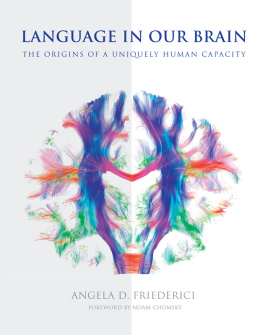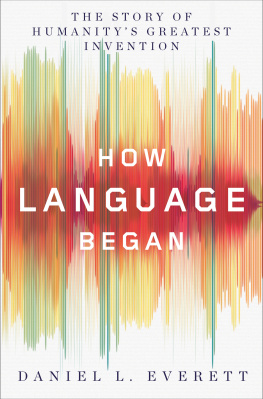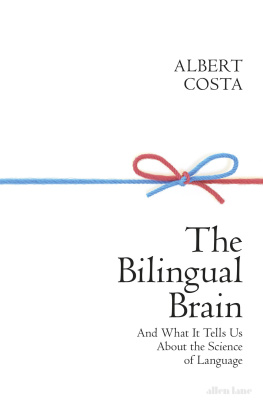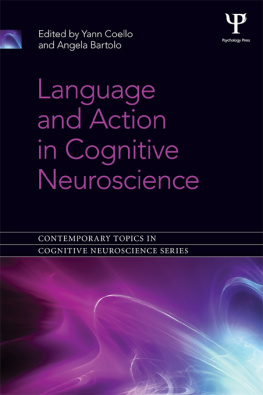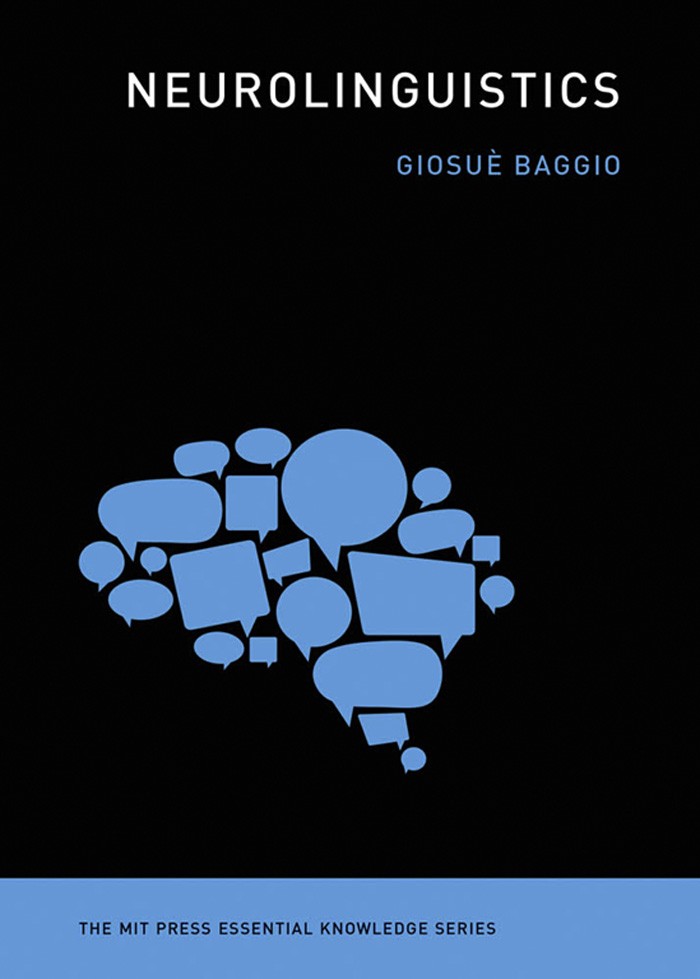
Neurolinguistics
The MIT Press Essential Knowledge series
A complete list of the titles in this series appears at the back of this book.
Neurolinguistics
Giosu Baggio
The MIT Press | Cambridge, Massachusetts | London, England
2022 Massachusetts Institute of Technology
All rights reserved. No part of this book may be reproduced in any form by any electronic or mechanical means (including photocopying, recording, or information storage and retrieval) without permission in writing from the publisher.
The MIT Press would like to thank the anonymous peer reviewers who provided comments on drafts of this book. The generous work of academic experts is essential for establishing the authority and quality of our publications. We acknowledge with gratitude the contributions of these otherwise uncredited readers.
This book was set in Chaparral Pro by New Best-set Typesetters Ltd.
Library of Congress Cataloging-in-Publication Data
Names: Baggio, Giosu, author.
Title: Neurolinguistics / Giosu Baggio.
Description: Cambridge, Massachusetts : The MIT Press, 2022. | Series: The MIT press essential knowledge series | Includes bibliographical references and index.
Identifiers: LCCN 2021003137 | ISBN 9780262543262 (paperback)
Subjects: LCSH: Neurolinguistics. | Language acquisitionPhysiological aspects. | BrainPhysiology.
Classification: LCC QP399 .B34 2022 | DDC 612.8/2336dc23
LC record available at https://lccn.loc.gov/2021003137
10 9 8 7 6 5 4 3 2 1
d_r0
Contents
Series Foreword
The MIT Press Essential Knowledge series offers accessible, concise, beautifully produced pocket-size books on topics of current interest. Written by leading thinkers, the books in this series deliver expert overviews of subjects that range from the cultural and the historical to the scientific and the technical.
In todays era of instant information gratification, we have ready access to opinions, rationalizations, and superficial descriptions. Much harder to come by is the foundational knowledge that informs a principled understanding of the world. Essential Knowledge books fill that need. Synthesizing specialized subject matter for nonspecialists and engaging critical topics through fundamentals, each of these compact volumes offers readers a point of access to complex ideas.
Preface
Neurolinguistics is the study of the neural bases of human language. It describes the anatomical structures (networks of neurons in the brain) and physiological processes (ways for these networks to be active) that allow humans to learn and use one or more languages. Neurolinguists may study how particular languagesEnglish, French, American Sign Language, or any otherare processed in the brain, but the goal is ultimately to describe the neural foundations of the human capacity for language as such.
As its name suggests, neurolinguistics is the result of the confluence of neuroscience and linguistics (and several other disciplines, as we will see). Alternative denominations are occasionally used, including cognitive neuroscience of language and neurobiology of language. These labels are largely equivalent, but they emphasize different disciplinary contributions to research on language and the brainfrom linguistics, cognitive psychology, or neurobiology. The role of theoretical linguistics is especially important. In order to study how the brain represents and processes language, it is often useful to know first what is being represented and processed: the formal structures of language at the levels of sound, grammar, and meaning. Neurolinguistics is also closely related to psycholinguistics: the study of language processing and acquisition using the full range of methods of theoretical and experimental psychology.
This book presents the essentials of modern neurolinguistics in a concise, engaging, yet precise form. It is intended primarily for students who are approaching the subject for the first time, for the scientist next door, and for the curious reader who wants to learn what is going on in our head when we acquire, use, or lose our precious language skills. A book of this kind should perhaps keep a safe distance from the frontiers of current research, where theory is put to the test and new results are generated and debated. However, that is not always possible or desirable. Essential knowledge of a field may also include knowledge of what is currently unknown: questions that can be posed confidently and rigorously but cannot yet be answered. It is the responsibility of the author to flag any contradictions between studies, open problems, or current controversies, along with more or less established methods and results.
By writing this book, I have taken on the challenge of deciding what is worth including in it and what is not. I feel therefore obliged to remind readers (and myself) that all scientific knowledge is invariably accessed and presented from some particular viewpoint. This book is no exception. Neurolinguistics is too diverse and too dynamic to capture from a single perspective accurately and completely (and to the full satisfaction of all of its practitioners). All I can do is encourage readers to read this book and then move on to other literature on the topic. The endnotes and the further readings at the end of the book are a good place to start.
1
Historical Introduction
You may not have heard about neurolinguistics before, but you may have heard of neuromania: the recent fascination with anything neuroscientific, especially if accompanied by colorful pictures of the brain in action. Is neurolinguistics yet another case of neuromania? The short answer is no. So far as one can tell, there is no general fad for language in the brain, and whatever interest there is in it has a long and rich history, predating many developments in cognitive neuroscience (the study of human brain structures and functions) and linguistics (the study of human languages). Research on language in the brain did not need a mature linguistics and a mature neuroscience to get started. In fact, some of the early results in neurolinguistics were instrumental in launching the enterprises of modern linguistics and modern cognitive neuroscience.
A comprehensive history of neurolinguistics has yet to be written, and the origins of the term neurolinguistics are still largely undocumented. We may identify three major turning points in the history of speculation and, eventually, research on language in the brain. The first was an empirical breakthrough: the discovery by Paul Broca around 1860 that damage to certain parts of frontal cortex can be accompanied by impaired speech production. The second was a theoretical breakthrough: the proposal by Noam Chomsky and others around 1960 that language is a computational system, formally defined by a finite vocabulary plus a finite set of rules that can be used to generate an infinite set of sentences. The third was a technological breakthrough: the introduction and diffusion around 1980 of methods for in vivo neural measurements in humans and of computers for the analysis and simulation of experimental data.
For better or worse, neurolinguistics today is shaped by those theoretical and methodological choices. We still view language as a computational component of the human mind, we still try to map specific linguistic processes to specific areas of the brain, active at particular times, and we still rely on high-tech measurements and data processing techniques for getting, analyzing, and modeling experimental results. Let us review in more detail how neurolinguistics became what it is.
Next page

